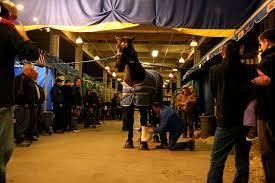All across Canada, there’s an event that stands as a testament to the country’s deep-rooted agricultural legacy, a tradition that dates back over 100 years. The Royal Agricultural Winter Fair, often simply referred to as the Royal Fair, isn’t just a show for farmers, though. It’s a celebration that brings together the rich tapestry of Canada’s food and agricultural industry, uniting urban and rural communities alike. This one-of-a-kind events in Toronto combines the elements of a fair with the adaptability of an agricultural show, adding a dash of international flavor to the mix as well.
In this post, we’ll explore the significance of the Royal Agricultural Winter Fair, uncovering why it continues to be a cherished Canadian tradition and a crucial platform for agricultural innovation.
The Roots of the Royal Fair
The history of the Royal Fair is as diverse as the country it represents. It began with a simple mission focused on promoting Canadian agriculture beyond the harvest season, in the chilly months between November and December, a time when farmers and urban audiences yearned for a connection to the land. The first fair was held in November 1922, situated in Toronto, Ontario, and it has remained in the same city since, though it has grown significantly in size and scope.
From exhibitions of farm animals to competitions showcasing the best in Canadian agriculture, the Royal Fair has always been committed to its founding principles. What sets it apart is its unique blend of tradition and innovation. It embraces the latest advancements in farming techniques and technology while cherishing the timeless values of hard work and the land.
A Showcase for Canadian Agriculture
The Royal Fair’s primary goal is to provide a platform where farmers, producers, and industry experts can engage with the public, share knowledge, and collaborate on promoting the sector. For the attendees, whether they’re urban dwellers or part of the rural community, the Fair offers an invaluable glimpse into the world of agriculture.
One of the highlights of the Royal Fair is the Supreme Championship Awards, where the best of the best in the livestock and agricultural sectors are recognized. It’s a hotly contested event and a source of pride for those who win, as these accolades symbolize the pinnacle of Canadian agriculture.
The Fair also features various workshops, seminars, and demonstrations aimed at educating the public about food production and consumption. This educational aspect is crucial in a time when the disconnect between food and its source has never been greater. By fostering understanding, the Royal Fair helps to build a more appreciative and knowledgeable consumer base.
The Fair’s Economic and Cultural Impact
Beyond its cultural significance, the Royal Fair has a tangible economic impact. It serves as a marketplace where agricultural products and animals are bought and sold, contributing to the robustness of the Canadian economy. Additionally, the Fair attracts visitors from all over the world, promoting Canada’s agricultural sector on the global stage.
Culturally, the Royal Fair has woven its way into the tapestry of Canadian identity. It’s an event that many look forward to, a place to make memories, and a showcase of the country’s values. It unites people of different backgrounds in a shared admiration for Canadian produce and the hands that nurture it.
A Legacy to be Proud Of
The Royal Agricultural Winter Fair stands as a testament to Canada’s agrarian roots and its commitment to agricultural excellence. It’s a tradition that not only honors the past but also shapes the future of the industry. With its focus on education, promotion, and community building, the Royal Fair continues to be a beloved and enduring Canadian institution.






+ There are no comments
Add yours